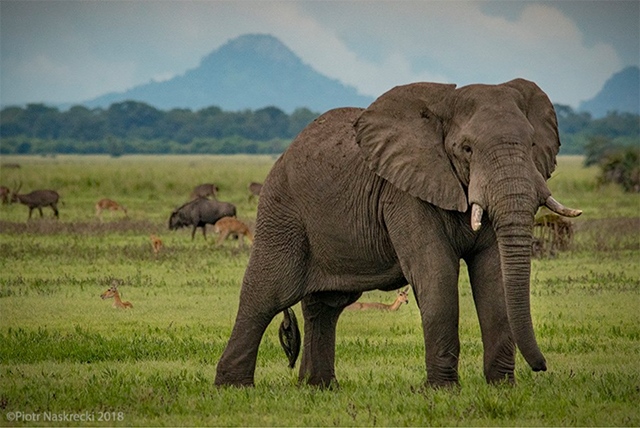

Mozambique, Africa – A new study, recently published in the journal PLOS ONE, documents for the first time the trajectory of wildlife populations in Mozambique’s Gorongosa National Park over a period of half a century.
Titled “War-induced collapse and asymmetric recovery of large-mammal populations in Gorongosa National Park, Mozambique”, the study is based on 18 aerial wildlife surveys undertaken with fixed-wing aircraft and helicopters between the years 1969 and 2018. The study was authored by a team comprised of scientists from Gorongosa, Princeton University in the USA and the Agricultural Research Council in South Africa.
In the 1960’s, Gorongosa National Park was touted as one of Africa’s most spectacular national parks, with massive herds of wildlife roaming its Rift Valley grasslands and woodlands. Gorongosa’s large-herbivore densities were on a par with areas of famously high wildlife abundance, such as Ngorongoro Crater and Serengeti National Park.
During Mozambique’s post-colonial civil war (1977–1992), in which hundreds of thousands of people were killed, hostilities raged in and around the park. This conflict, and the poverty that persisted after the fighting ended, severely reduced the park’s large mammals. Wildlife populations declined by 90–99% from the mid-1970s through the late 1990s. This conclusion from the aerial wildlife counts was reinforced by anecdotal reports from observers familiar with pre-war conditions, which convey a near-total elimination of wildlife.
Following early restoration efforts, the wildlife recovery has accelerated since 2004, coinciding with the public-private co-management of the Gorongosa Project with the Government of Mozambique. The Gorongosa Project follows a dual strategy of conservation and human development for Gorongosa and its surrounding Buffer Zone and its habitants. Park infrastructure has been re-built and expanded, the rangers corps has been re-trained, expanded and equipped, whilst the human-development programmes have simultaneously been focusing on health, agricultural and educational projects.
There has been a marked recovery of total wildlife biomass and of most individual populations. This largely reflects natural population growth of the remnant populations. Wildlife translocations from other protected areas have been limited to less than 500 animals, mostly buffalo and blue wildebeest to supplement the small number of survivors from the war.
Within the central Rift Valley area of the Park, the wildlife biomass has already recovered to more than 80% of pre-war biomass. However, the recovery has been asymmetric. Waterbuck have emerged as the overwhelmingly dominant post-war species whereas larger animals such as buffalo are recovering more slowly, probably because of their intrinsically lower growth rates.
During the last aerial survey that was undertaken in October 2018, more than 100 000 large herbivores were counted in the Park, once again making it a truly spectacular destination that is testimony to nature’s resilience given good protection and support.
The Gorongosa Project integrates conservation and human development with the understanding that a healthy ecosystem will benefit human beings, who in turn will be motivated to support Gorongosa Park objectives.
The Gorongosa Family is growing stronger each day and we are grateful for the vision and generosity shown by our donors: USAID, The Royal Embassy of Norway, Irish Aid, the Global Environment Facility (GEF/ UNDP), the Oak Foundation, the Howard Hughes Medical Institute, Zoo Boise, the Government of Portugal, Rizwan Adatia Foundation, National Geographic Society, and our Business Club members.
If you would like more information about this topic, or would like to schedule an interview with those involved in the project, please call Vasco Galante at +258 822970010 (WhatsApp) or email vasco@gorongosa.net.
Learn more about the E.O. Wilson Biodiversity Laboratory at Gorongosa National Park
E.O. Wilson Biodiversity Laboratory at Gorongosa National Park from EOWilson Biodiversity Foundation on Vimeo.

